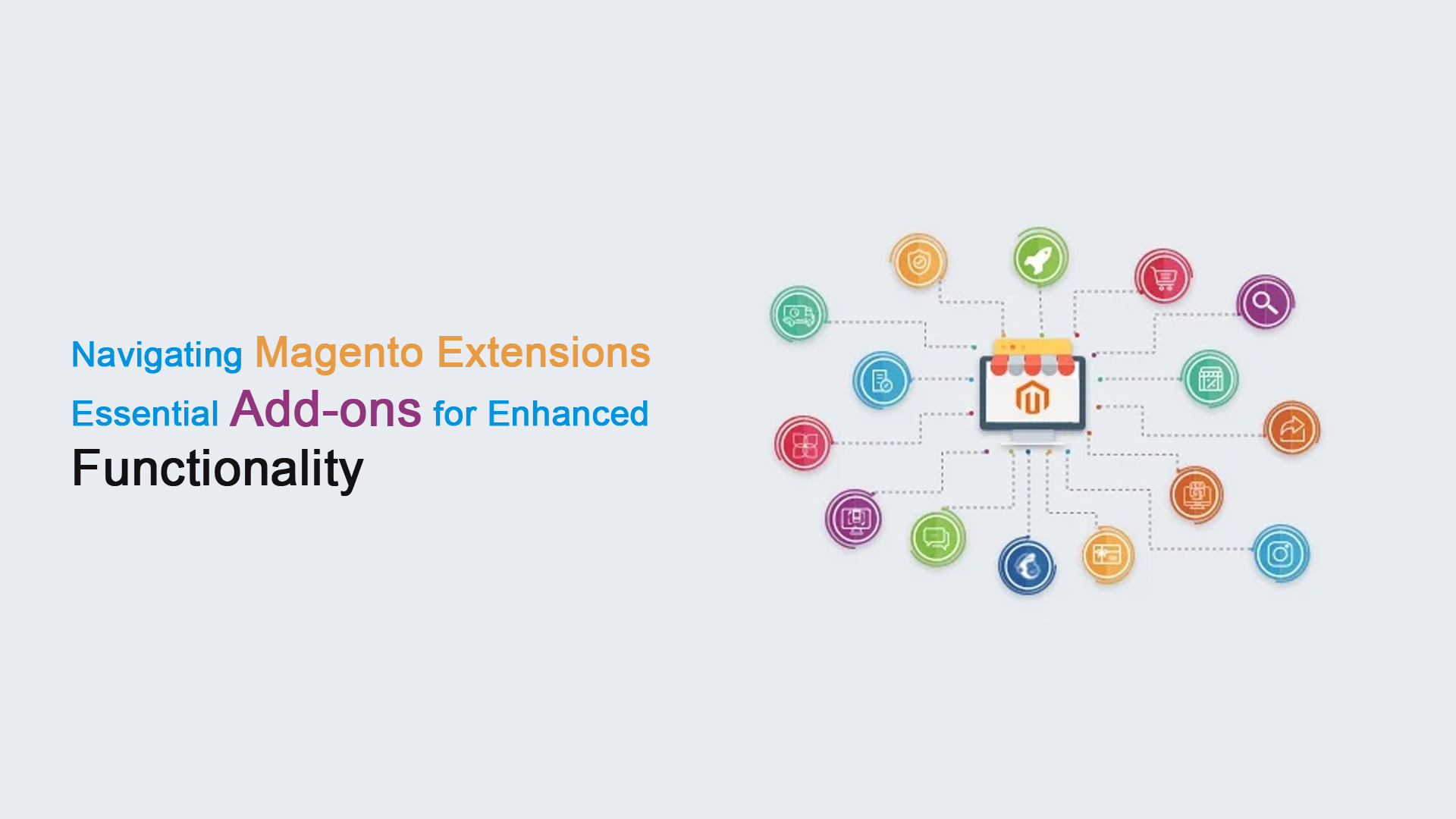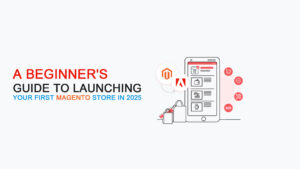Navigating Magento Extensions: Essential Add-ons for Enhanced Functionality
At its core, Magento (now primarily known as Adobe Commerce or Magento Open Source) is an incredibly robust and flexible e-commerce platform. It provides a solid foundation for online stores, capable of managing vast product catalogs, processing countless orders, and handling complex customer relationships. However, its true power, its ability to transform from a functional storefront into a dynamic, highly specialized e-commerce powerhouse, lies in its vast ecosystem of extensions (also known as modules or plugins).
For merchants, especially those navigating the competitive Indian e-commerce landscape in 2025, extensions are the key to unlocking enhanced functionality, streamlining operations, and delivering truly exceptional customer experiences. But with thousands of options available, the journey of selecting and managing these add-ons can feel overwhelming.
This comprehensive guide will help you navigate the world of Magento extensions. We’ll explore why they are essential, where to find them, what crucial considerations to keep in mind, and highlight the must-have categories of extensions that can supercharge your online store.
Why Magento Extensions Are Essential for Your Store’s Success
Think of Magento’s core as a powerful, high-performance car engine. It’s fantastic on its own, but to win races or tackle specific terrains, you need specialized tires, advanced navigation systems, or custom aerodynamic kits. Extensions are precisely those specialized add-ons that bolt onto your Magento core, providing functionalities that aren’t available out-of-the-box.
- Extending Core Functionality: While Magento provides excellent baseline features, extensions fill the gaps for specific business needs. This could range from advanced SEO tools to integrate with Indian payment gateways, or sophisticated marketing automation.
- Customization Without Core Code Modification: Extensions are designed to integrate seamlessly without altering Magento’s core files. This is crucial for maintaining upgrade compatibility, ensuring security, and simplifying future maintenance.
- Faster Development & Cost-Effectiveness: Building unique features from scratch is time-consuming and expensive. Extensions offer pre-built, tested solutions that can be rapidly deployed, significantly reducing development time and cost.
- Industry-Specific Solutions: Extensions allow you to tailor your store to specific industry requirements, whether it’s a B2B portal with custom pricing rules or a marketplace for multiple vendors.
- Keeping Pace with Trends: The e-commerce world evolves rapidly. Extensions allow you to quickly integrate new technologies like AI-powered personalization, advanced analytics, or Progressive Web App (PWA) functionalities.
- Competitive Advantage: By offering unique features, a smoother user experience, or more efficient backend processes, extensions can differentiate your store from competitors and help you stand out in crowded markets like India.
Where to Find Magento Extensions
The Magento extension ecosystem is vast. Knowing where to look is the first step:
- The Magento Marketplace (Official):
- Pros: This is the official repository, run by Adobe. Extensions undergo a rigorous vetting process for code quality, security, and compatibility. They typically come with clear documentation and support policies. It’s the safest bet for critical functionalities.
- Cons: While the quality is high, the selection might not always be as diverse or cutting-edge as third-party options, and prices can be higher.
- Reputable Third-Party Developers & Agencies:
- Examples: Companies like Amasty, Aheadworks, Mageplaza, Webkul, Magenest, and others have built strong reputations for developing high-quality Magento extensions. Many specialized Magento development agencies also create their own unique extensions.
- Pros: Often offer innovative features, competitive pricing, and highly specialized solutions for niche problems. You might find a wider variety of unique functionalities here.
- Cons: The quality can vary. It’s crucial to thoroughly vet the developer’s reputation, read reviews, and check their support quality before purchasing.
- Custom Development:
- Pros: If your needs are highly unique and no existing extension fits, custom development is the answer. It ensures a tailor-made solution that perfectly aligns with your business logic.
- Cons: This is the most expensive option and requires significant development time. It’s typically reserved for complex, mission-critical functionalities that provide a unique competitive edge.
Key Considerations When Choosing an Extension
Selecting the right extension is a critical decision that impacts your store’s performance, security, and future scalability. Don’t rush into it.
- Compatibility is King:
- Magento Version: Ensure the extension is compatible with your exact Magento version (e.g., Magento Open Source 2.4.x or Adobe Commerce 2.4.x). Version mismatches are a common cause of issues.
- Theme & Other Extensions: Check for known conflicts with your current theme or other installed extensions. Read the documentation or contact the developer if unsure.
- Features & Functionality:
- Does it precisely solve the problem you’re trying to address?
- Does it offer all the necessary features without being overly bloated with unnecessary functionalities that could slow down your site?
- Request a demo or sandbox access if available.
- Developer Reputation & Support:
- Reviews & Ratings: Look for consistent positive reviews on the Magento Marketplace or the developer’s website.
- Support Policy: What kind of support is offered? (Email, ticketing system, phone). How long is the support period? What are the response times?
- Documentation: Is the installation and user documentation clear, comprehensive, and up-to-date?
- Track Record: Does the developer have a history of releasing updates and security patches promptly?
- Performance Impact:
- Every extension adds code to your store. Poorly coded extensions can significantly slow down your site, negatively impacting user experience and SEO.
- Ask the developer about performance benchmarks or look for reviews mentioning speed. Always test new extensions on a staging environment before pushing to live.
- Security:
- Extensions are a common vector for security vulnerabilities if not coded properly.
- Stick to reputable developers. Ensure extensions adhere to Magento’s coding standards.
- Check if the developer provides regular security patches.
- Price vs. Value:
- Don’t just choose the cheapest option. Consider the total cost of ownership (TCO), including potential future support costs, conflicts, and the value it brings to your business. A slightly more expensive, well-supported extension can save you significant money in the long run.
- Updates & Maintenance:
- E-commerce platforms are constantly evolving. Will the extension be regularly updated to maintain compatibility with new Magento versions and security patches? This is vital for long-term stability.
Essential Categories of Magento Extensions for 2025
While every business has unique needs, certain categories of extensions are almost universally beneficial for enhancing your Magento store’s functionality and driving growth.
1. Marketing & SEO Extensions
- Advanced SEO Modules: Magento’s built-in SEO is good, but extensions can supercharge it with features like layered navigation SEO, rich snippets (Schema.org markup), advanced sitemap generation, Hreflang tags for multilingual stores, and better control over meta templates.
- Email Marketing Integration: Seamlessly integrate with popular platforms like Mailchimp, Klaviyo, or SendGrid for automated abandoned cart recovery, segmented campaigns, newsletters, and post-purchase follow-ups.
- Pop-ups & Notification Bars: Essential for lead capture, promoting sales, capturing emails, and announcing special offers.
- Abandoned Cart Recovery: Automatically send reminder emails to customers who leave items in their cart, significantly boosting conversion rates.
- Web Push Notifications: Re-engage visitors directly on their browsers or mobile devices with personalized offers or updates.
- Social Media Integration: Enable easy product sharing, social login, and integration with social commerce features.
- Referral & Loyalty Programs: Encourage word-of-mouth marketing and repeat purchases through points systems, tiered rewards, and referral bonuses.
2. Payment & Shipping Extensions
- Indian Payment Gateways: Critical for the Indian market. While some are core integrations, many popular local options like Razorpay, PayU, Paytm, CCAvenue, Cashfree, often require dedicated extensions for seamless integration and local compliance.
- Advanced Shipping Rules: For complex shipping logic based on weight, quantity, product type, customer group, or delivery location (e.g., zone-based rates for different states in India).
- Multi-Carrier Shipping Solutions: Integrate with multiple local and national courier services (e.g., Delhivery, Blue Dart, Xpressbees, Shiprocket) for automated label generation, tracking, and optimized logistics.
- Cash on Delivery (COD) Management: Given its popularity in India, extensions offer advanced COD features like verification, partial payment, and fraud prevention.
3. Customer Service & Experience (CX) Extensions
- Live Chat/Help Desk Integration: Provide real-time support to customers directly on your website, improving satisfaction and reducing cart abandonment. Integrate with platforms like Zendesk, Freshdesk, or Zoho Desk.
- Return Merchandise Authorization (RMA): Streamline the process for product returns and exchanges, improving customer trust and operational efficiency.
- FAQ/Knowledge Base: Create a self-service portal where customers can find answers to common questions, reducing the burden on your support team.
- Customer Reviews & Ratings: Integrate with trusted platforms like Yotpo, Trustpilot, or Judge.me to collect and display authentic customer reviews, crucial social proof for building confidence.
- Wishlist/Save for Later: Allows customers to save products they’re interested in for future purchase, increasing engagement and potential conversions.
4. Performance & Optimization Extensions
- Image Optimization & Compression: Automatically compress and optimize images (e.g., convert to WebP format) to significantly reduce page load times, which is vital for SEO and user experience.
- Advanced Caching & Speed Optimizers: Go beyond Magento’s default caching to further enhance page speed, improve Core Web Vitals, and handle high traffic volumes efficiently.
- Code Minification/Bundling: Tools that reduce the size of CSS and JavaScript files and combine them to minimize HTTP requests, speeding up rendering.
5. Admin & Backend Management Extensions
- Mass Product Actions: Extensions that allow you to perform bulk updates to products, categories, or customer data, saving countless hours for large catalogs.
- Improved Import/Export: Enhance Magento’s native import/export capabilities for complex data migration or ongoing synchronization with ERP/CRM systems.
- Advanced Reporting & Analytics: While Adobe Commerce has robust analytics, Open Source users can benefit from extensions that provide deeper insights into sales, customer behavior, and marketing performance.
- Admin Activity Logs: Track every action performed by admin users, crucial for security auditing and troubleshooting.
6. Security Extensions (Especially for Open Source)
- Firewall/DDoS Protection: While hosting providers offer some protection, specific Magento extensions can add an extra layer of defense against common attacks.
- Security Scanners: Tools that regularly scan your Magento installation for vulnerabilities, malware, and suspicious activity.
- Advanced CAPTCHA/Bot Protection: Enhance default security against spam and automated attacks.
Best Practices for Installing & Managing Extensions
Just buying an extension isn’t enough; proper management is key.
- Always Test on a Staging Environment: Never install or update an extension directly on your live production store. Use a staging or development environment to test thoroughly for conflicts, bugs, and performance impacts.
- Back Up Your Store: Before any major installation or update, always perform a full backup of your Magento files and database. This is your safety net if something goes wrong.
- Follow Installation Instructions Carefully: Read the developer’s documentation thoroughly. Magento extensions can have specific installation steps.
- Disable Cache During Installation: Remember to disable Magento’s cache before installing or upgrading extensions, and then re-enable it after. Clear all caches for changes to take effect.
- Monitor Performance: After installing a new extension, closely monitor your site’s speed (using tools like Google PageSpeed Insights) and overall functionality.
- Regularly Update Extensions: Keep all your extensions updated to their latest versions. Updates often include critical security patches, bug fixes, and new features.
- Remove Unused Extensions: If you’re no longer using an extension, disable and ideally uninstall it. Unused code can clutter your system, create security risks, and slow down your site.
- Limit the Number of Extensions: While powerful, too many extensions can lead to conflicts, performance degradation, and increased maintenance complexity. Choose wisely and only install what’s truly essential.
- Professional Help: For complex installations, troubleshooting conflicts, or performance tuning, don’t hesitate to hire an experienced Magento developer or agency.
Conclusion
Magento extensions are the secret sauce that transforms a standard e-commerce platform into a tailored, high-performing sales machine. By strategically selecting the right add-ons for marketing, payments, customer experience, and backend management, you can unlock unparalleled functionality, streamline your operations, and significantly enhance your store’s competitive edge in 2025.
Approach the Magento Marketplace with a clear plan, prioritize compatibility and reputation, and always follow best practices for installation and management. With careful consideration, these essential add-ons will become indispensable tools on your journey from setting up your first store to achieving sustained e-commerce success.




